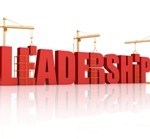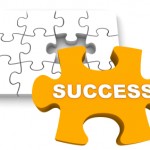As a part of our talent acquisition engagements, we ask our clients how they define “top talent” and how they would assess those traits in the interview process. Reflecting on the insightful comments we hear every day, we thought there would be great value in a new blog in which senior executives/thought leaders share their “Take on Talent.”
This is the twenty-second in a series of blogs/interviews with senior executives who are thought leaders in the areas of Talent Acquisition, Career Development and Leadership who will share their perspectives on this ever present question.
Kevin Campbell, Chief Executive Officer, Syniti
As CEO, Kevin drives the growth agenda of Syniti with poise and at ease. With a solid track record in driving growth at scale, Kevin joined Syniti, formerly BackOffice Associates, as president, global consulting and services April 2018, and was named as CEO in February 2019.
During his 20+ year, 2-term tenure at Accenture, he was Group Chief Executive for Outsourcing and Group Chief Executive Technology where he drove double-digit growth. Kevin was also CO-COO for Bridgewater Associates and COO for Oscar Health based out of New York.
As CEO, Kevin’s leadership remit here is simple: Inspire and empower those around him to deliver on the business’ vision and purpose. He oversees all aspects of our operation while also taking every opportunity to engage with customers, partners, and employees on the ground around the world.
At home and in relaxed mode, Kevin devotes himself to family life and the resulting bike rides and activities that come with such a commitment. He also coaches his children’s sports teams and can often be found at various sports fields hurling encouragement. This has even been turned in to a group activity when they attend Atlanta United FC as season ticket holders. Go five stripes! Continue reading




 The Account Leader is responsible for all client interfaces within the assigned account scope. S/He works together with his/her manager to build an account plan and is responsible for client management based on the account plan. Usually, the Account Manager handles multiple accounts or a large account depending on the value. He / She is responsible for Revenue Growth within these accounts.
The Account Leader is responsible for all client interfaces within the assigned account scope. S/He works together with his/her manager to build an account plan and is responsible for client management based on the account plan. Usually, the Account Manager handles multiple accounts or a large account depending on the value. He / She is responsible for Revenue Growth within these accounts. By Darleen DeRosa
By Darleen DeRosa by Laura Gassner Otting
by Laura Gassner Otting By William Arruda
By William Arruda